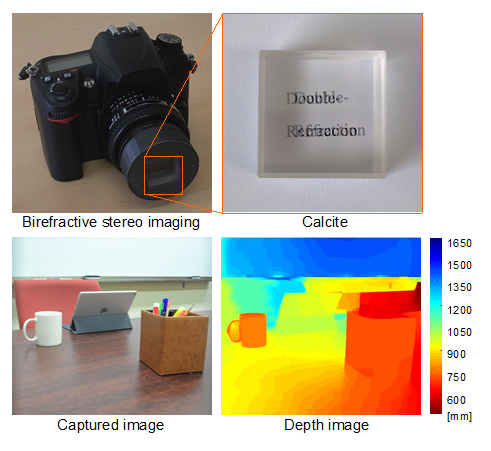Visual Computing Laboratory (VCLab) researchers headed by KAIST Professor Min H. Kim have developed a breakthrough stereo imaging technology that enables the capture of both the color and depth information from a single shot image via double refraction.
It has long been widely accepted among computer vision researchers that binocular/multiview techniques require at least two cameras in order to estimate depths. Often, the rhetoric for explaining why humans have evolved to have two eyes also bears an analogous reason -- that of having to “eyeball” the approximate distance to targets. However, the familiar middle school example of refraction, when doubly applied to images, seems to result in a much more useful application, with a vast potential ranging from better depth estimation by robots, autonomous vehicles, augmented reality, in addition to the improvements in its homeground of computer graphics. The groundbreaking element of Professor Kim’s research findings is that, contrary to existing techniques, the novel implementation named “birefractive stereo imaging” needs no more than a single image to sufficiently extract depth and color information.

Double refraction, as explained in the research findings, is simply a phenomenon exhibited by materials that possess two refractive indices instead of one. VCLab researchers placed one such material, called calcite, in front of a conventional camera, processed the image information that traversed the birefringent material and then through the camera lens, and then successfully captured and analyzed the depth data from a single shot image. Various 3D stereo imaging applications, such as refocusing and depth-aware image editing have already been demonstrated with the new, surprisingly simple and cost-efficient technology. As indicated in the research paper, which has been accepted to appear on ACM Transactions on Graphics later this year, birefractive stereo imaging outperforms existing attempts at monocular depth estimation since “it is cheap, introduces no visible image degradation... and is readily useful for personal photography.”

